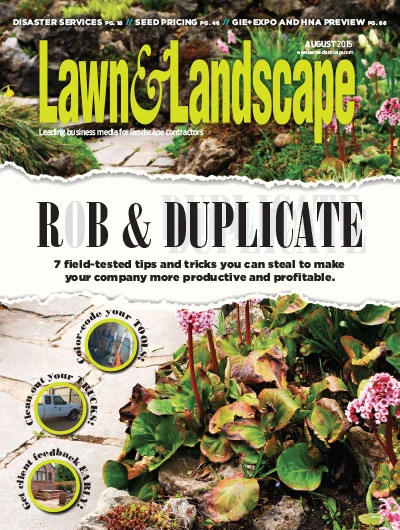
This is particularly true for snow and ice removal companies. Equipment failure can lead to catastrophic results for your bottom line. The secret is simple: Be prepared by standardizing your fleet. Planning during the summer is the key to guaranteeing not only a successful winter but diminished headaches and maximized profits.
Strategic partners.
Think of your local dealerships as strategic partners in the endeavor to acquire equipment. Before purchasing ask yourself: Does the manufacturer of the equipment I am purchasing have replacement parts available locally? Do they sell and repair these parts locally? Do they have the ability to respond to my needs?
The best piece of equipment is only the best if you have a local dealer with a responsive service department that stocks all the parts you’ll need. This partner must also have flexible hours to assist with recovery when unexpected breakdowns occur during snow and ice events. Always do your due diligence in this area and take the time to nurture these relationships. Keeping close ties and current accounts with your local dealership will ensure a quick response when you need it most.
To buy or to lease?
Never assume you have to own all of your equipment outright to be successful through the season. In fact, I recommend leasing any piece of equipment that will be used less than 200 hours per season. It’s been my experience, in considering the cost of leasing and the cost of acquisition in an overhead recovery model, that it’s cheaper to lease this equipment as it keeps your overhead recovery rate lower.
When making this decision, it is important to consider cash flow and tax implications for the year. Leasing allows you the option to buy the equipment at the end of the lease term. Leasing usually has lower monthly payments, which will increase cash flow and allow for newer equipment still under warranty. This is particularly useful if a breakdown should occur as you will avoid repair costs.
Another advantage to leasing is that the expense of the lease can be realized that tax year as a deduction. According to the Section 179 deduction for the year, part or all of, up to $25,000, your business equipment costs can be deducted. Consult your CPA before making a vehicle or loader purchase to ensure it’s the right choice for cash flow and tax purposes. Your CPA will also be able to confirm the status and limits of the Section 179 tax deduction rules for the current tax year.
Standardize your fleet.
First, find your niche market by standardizing the size and types of properties you service. Then purchase or lease the right size equipment for the properties you are bidding on.
Your niche may be two or three different types of properties but they should all share similar processes and operations for work performed. Now you can standardize your equipment. Acquire the same types of plows, salters, trucks, loaders, sidewalk clearing and de-icing equipment that you’ll need to perform work during snow and ice events. By standardizing equipment, you can easily follow suit with your training, maintenance and repair processes, making your business much more manageable during storms.
Once you have standardized your fleet, employee training can be systematized. Onboarding of staff becomes more practicable because all employees are trained on the same equipment. They learn how to use it and how to repair it. Repairs become routine as parts are interchangeable and standard tools can be used. Companies can also maintain stockpiles of backup equipment to combat downtime when a breakdown occurs.
The ratio I use is one back-up plow for every five trucks and one back-up truck for every 10 plow trucks. This also makes pre-, mid- and post-season maintenance predictable as all employees have the skills, tools and training needed.
Any snow and ice removal professional knows the wear and tear on equipment is considerable. I have found that the sweet spot for replacing trucks/plows is every five to six years, especially if they are operating year-round. It is important to set up a standard replacement plan for your equipment and make sure you remember to include these costs in your overhead recovery model.
Equipping your operation the right way can mean big results for your bottom line. Pre-plan and make smart decisions that will assist you in meeting your goals. Equipment standardization allows for employee proficiency in operation, efficiency among crews, predictable preventative maintenance and big returns on investment for your company.
The author is owner of Callahan Lawn Care and Property Maintenance. He has been in the snow business for more than 15 years. He can be reached at mcallahan@giemedia.com.

Explore the August 2015 Issue
Check out more from this issue and find your next story to read.
Latest from Lawn & Landscape
- Connect, Control & Conserve with Horizon Technical Services
- Use Horizon's Parts Hotline
- How I built a Top 100 company
- Horizon’s Exclusive TurfGro Fertilizer
- Grow your business with mosquito control
- LandCare adds 2 branches in SoCal, promotes Aleman to branch manager
- Spray them away
- PERC helps debut propane direct-injection fuel system at ACT Expo 2025





